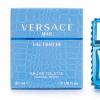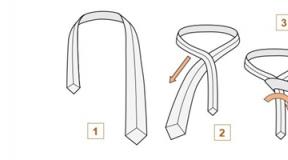Causes of early graying of hair. How to get rid of gray hair: we treat, prevent and disguise. Why do young people get gray hair?
Update: October 2018
Early gray hair is an aesthetic phenomenon when gray hair appears at a young age: up to 25 years in Caucasians, and up to 30 years in people of the Negroid race. By about 40 years of age, hair is almost completely bleached.
Gray hair at an early age, as a rule, is not associated with general aging of the body and is a consequence of unfavorable internal and external factors that disrupt the functioning of melanocyte cells.
Not everyone delves into the root causes of early gray hair, regularly dyes their hair and forgets about the problem, while a symptom may indicate internal pathological changes in the body. Identifying the cause of early gray hair is not easy.
What is considered normal?
There is no specific age norm for the onset of gray hair that could be applied to all races and nationalities. In addition to the genetically determined mechanisms of aging, this process is influenced by living conditions, stress, some diseases, etc. Single hairs with altered pigmentation can be found after 30 years, most often on the temples and the front of the head. Almost complete gray hair is observed by the age of 55-60.
Brunettes and brunettes are at risk for earlier graying.
Causes of early gray hair
Graying can develop in three possible ways:
- Physiological, associated with age-related changes in the body and its natural aging (see);
- Congenital or leukotrichia, caused by a congenital lack of pigment in the hair shafts;
- Earlier, premature, which develops in young people;
Along the way, graying can be:
- complete, in which the entire hairline loses pigmentation;
- partial (individual hairs or strands turn grey);
- focal (greying in only one area).
As for the mechanism of graying, it is the same for both age and early development: the loss of melanin pigment from the hair shaft occurs. This pigment is synthesized in special cells - melanocytes, which are located in the basal layer of the epidermis, as well as in hair follicles. The cells produce pigment, and it travels from the follicles to the hair shafts.
Stimulation of melanin formation occurs under the influence of mediators of the sympathetic nervous system, pituitary hormones (ACTH, melanocyte-stimulating hormone and β-lipotropin), as well as thyroid hormones and sex hormones.
With the physiological variant of graying, melanocytes age, which produce less and less pigment.
The causes of early gray hair may be related to:
Characteristics of gray hair
The color of the scalp for each person depends on the type of pigment:
- Eumelanin creates black or brown color;
- Pheomelanin is a red or similar shade;
- A lower concentration of pigments is typical for blondes.
Hairs lacking melanin change not only their color, but also their structure. The changes are more noticeable on dark hair than on light hair. The pigment provides elasticity and strength to the hair shaft, protects it from ultraviolet radiation and adverse environmental influences. In addition to discoloration, hair shafts become hard, split, dry, brittle and dull. They are more difficult to care for, i.e. comb and style.
Is there any point in pulling out gray hair?
Some people, in the hope of getting rid of gray hair, begin to pluck them, but this is pointless - a new, identical gray hair will grow in place of the plucked hair. Moreover, you can damage the hair follicles and develop dermatitis.
How to get rid of gray hair
It is impossible to reverse the graying mechanism, but it is quite possible to stop or slow it down. It should be noted that the problem should not be ignored by doctors and be sure to visit a therapist, endocrinologist, trichologist, who will prescribe the appropriate examination and treatment of gray hair.
How to fight gray hair and care for gray hair at home:
- Stop smoking - all heavy smokers have dull and brittle hair;
- Eat well. It is imperative that the diet includes meat, fish, vegetables and fruits;
- Be sure to get enough sleep, 8 hours a day;
- Be a physically active person. Physical inactivity is invariably associated with chronic hypoxia. And cells that do not receive enough oxygen cannot function fully, including melanocytes.
- Limit yourself from stress as much as possible. If this is not possible, take mild sedatives in traumatic situations (valerian tincture or tablets, motherwort, etc.);
- Protect the scalp and hair from temperature changes and ultraviolet radiation;
- Use high-quality cosmetic care products. Recommended products for dry, damaged hair;
- Regularly carry out self-massage of the head using special massagers or a comb with soft teeth;
- Once a week, rub a mixture of castor and burdock oil into the hair roots and leave under a warm towel for 1 hour, then rinse with shampoo;
- Instead of a rinse, you can use infusions of burdock, nettle, and birch.
How to fight gray hair with salon treatments:
Salon treatments cannot restore natural color, but they can prevent gray hair or slow down its progression.
- Scalp massage. A pleasant procedure activates blood circulation, which means it improves the trophism of melanocyte cells. The procedure is carried out in beauty salons, using various nourishing oils and compositions. It is recommended to undergo 10 procedures once a quarter.
- Microelement mesotherapy, which involves intradermal injection of the scalp with microelement meso-cocktails using special syringes. The drugs are injected to a depth of 2-4 mm, allowing the delivery of useful elements to the area where the hair follicles are located. As a rule, the procedure is preceded by a spectral analysis of hair for microelements, which detects a deficiency of certain substances.
- Nourishing masks and compresses. Special formulations make it possible to restore a healthy appearance and shine to the scalp and hair, improve the structure of the hair shafts, which undergoes changes when graying, and also prepare them for coloring. Wheat germ oil, algae, natural clays, plant extracts, vitamin and microelement essences are used as components for masks (see).
- Plasmolifting. For this procedure, the patient's blood is taken, which is specially processed and purified, as a result of which plasma is released from it, without formed elements. Plasma is injected into the scalp using special syringes according to the principle of mesotherapy. It is believed that the procedure triggers the self-healing processes of skin cells, including melanocytes.
How to dye gray hair
This is perhaps the most effective way to disguise loss of hair color.
It should be noted that at least the first time you should seek help from a beauty salon specialist so that the coloring is effective. The choice of dye composition, color, exposure and frequency of dyeing is based on the following factors:
- number of gray hairs;
- hair length and structure;
- growth rate of hair shafts;
- skin type.
Sometimes before dyeing they resort to bleaching in order to achieve uniform coloring of the hair.
- With a small percentage of gray hair on the head (up to 25%), you can resort to tinting or coloring when the changed hair is dyed. The second option is highlighting or blonding, i.e. dyeing gray locks in a light color.
- When changing more than 50% of the hair, complete permanent dyeing with natural or chemical dyes is effective.
- As for the color, the darker it is, the more contrasting and noticeable the gray hair will be as the roots grow. The optimal color is golden; it does not allow gray hair to show through.
What colors really cover gray hair?
On the packaging, the manufacturer often writes “covers gray hair 100%,” but the veracity of these promises can only be verified through personal experience. Professional series of dyes or mixtures prepared by hairdressers in beauty salons, as well as special lines for gray hair from well-known brands (for example, Estelle, Matrix) are considered good. To improve the durability and strength of paint, it is recommended to add 6% professional oxidant to it.
As a rule, good and professional paints are very expensive, and you will have to use them regularly, which not everyone can afford. You can use cheap natural dyes that are safe for frequent use and easy on your wallet.
- To obtain a dark chestnut color, basma and henna are mixed in equal proportions, diluted with water to the consistency of sour cream and applied to the scalp for half an hour. The roots should be painted especially carefully. The paint is washed off with warm water.
- To obtain a soft, natural black color, mix 2 parts basma and 1 part henna, prepare the mixture according to the algorithm above.
It is easier for men to hide gray hair - just have a short haircut without focusing on problem areas of the hair. Women can use asymmetrical and multi-layered haircuts, and arrange their strands so that gray hair is hidden under normal hair.
Gray hair appears in most people who have crossed a certain age limit. People most often notice their first gray hair at the age of 30-35, and then their number gradually increases over time.
However, premature graying is a common problem for many men and women who do not want to look older than their years, but suddenly find themselves with individual white hairs or even entire strands. A similar nuisance can happen both to those who often visit doctors and to people who are absolutely healthy.
Why do some people go gray and start dyeing their hair at 20, while others don’t have any worries until they are 50? If gray hair appears early, is there anything that can be done?
From the day a person discovers a few gray hairs, it can take more than 10 years before gray hair becomes predominant. Therefore, you can try to stop or at least slow down this process.
But first, it’s worth understanding how gray hair differs from “young” hair and where it comes from.
Hair would be colorless if it were not colored by pigments produced by specialized cells called melanocytes. Each hair follicle contains such cells, and hair color depends on them.
Eumelanin and pheomelanin
Melanocytes produce eumelanin, which is responsible for the black or dark brown color, and pheomelanin, which determines the reddish-yellow color.
 In a certain proportion, these pigments color keratin, the main protein that makes up hair. Dark or light hair color depends on how much melanin each hair follicle receives. In turn, the volume and combination of different types of melanin are mainly determined by our genes. Thus, we get the widest range of natural shades: golden, light brown, reddish, chestnut, black.
In a certain proportion, these pigments color keratin, the main protein that makes up hair. Dark or light hair color depends on how much melanin each hair follicle receives. In turn, the volume and combination of different types of melanin are mainly determined by our genes. Thus, we get the widest range of natural shades: golden, light brown, reddish, chestnut, black.
Melanocytes begin to work before we are born, and their function gradually regresses over the years. Typically, their activity decreases by 10-20% every 10 years after age 30. As graying progresses, the melanocytes die off until they disappear completely, and then all the hair grows colorless, that is, gray.
 In 2009, scientists in Europe discovered another factor that causes hair to discolor with age. They found that hair follicles produce some amount of hydrogen peroxide. As any teenager knows, this substance is widely used to artificially whiten hair.
In 2009, scientists in Europe discovered another factor that causes hair to discolor with age. They found that hair follicles produce some amount of hydrogen peroxide. As any teenager knows, this substance is widely used to artificially whiten hair.
This substance is usually broken down by the enzyme catalase. But as a person ages, catalase production becomes less efficient. As a result, hydrogen peroxide accumulates, and it turns out that it whitens the hair from the inside, as if the owner had dyed it with bleaching dye.
Why does gray hair appear? (7 reasons)

There are many factors that can change hair pigmentation. Scientists divide them into internal (genetic characteristics, hormones, metabolism, age) and external (ecology, various adverse effects).
Very often, heredity is a predisposing factor. This means that most people will start to experience gray hair around the same age as their parents and grandparents. By the way, statistics show that representatives of different races turn gray at different times. The fastest are Caucasoids, then Mongoloids, and last of all are Negroids. It is noteworthy that those with red hair, on average, acquire gray hair earlier than anyone else.
Stress and psychological problems can also cause early graying of hair. According to research, people who suffer from anxiety and stress over a long period of time can expect gray hair to appear early. Depression and sadness can have a detrimental effect on health in general and reduce melanin production in particular.
It is noted that the early appearance of gray hair is more common in people who suffer from chronic sinusitis and colds.
Using hot water to wash your hair can disrupt the mechanism of pigment formation and cause graying.
Smoking also affects the age at which gray hair appears. The harmful substances that a smoker receives reduce the level of oxygen in the blood and the cells “starve,” including melanocytes.
Problems with the thyroid gland can cause hair discoloration.
A diet lacking vitamins can cause premature graying. The lack of certain vitamins, iron, copper, iodine in the daily diet is considered a significant factor.
How to eat to avoid going gray?
 Lifestyle and diet are key factors in maintaining health and youth, but most of us buy food without thinking about its usefulness or making an attempt to maintain the right balance of vitamins and minerals.
Lifestyle and diet are key factors in maintaining health and youth, but most of us buy food without thinking about its usefulness or making an attempt to maintain the right balance of vitamins and minerals.
Meanwhile, any product contains a certain set of substances, each of which performs its own function and its deficiency can cause certain disorders. Including hair loss and bleaching.
6 Minerals That Help Prevent Early Gray Hair
- Calcium. Milk and any dairy products are a good source of calcium.
- Chromium. Wheat bread, wine, and oysters are sources of chromium.
- Copper. Green vegetables, eggs, chicken, mushrooms and beans, almonds and pumpkin seeds contain large amounts of copper.
- Iodine. If you have problems with the thyroid gland, products containing iodine will help with hair loss and premature graying of hair. These are garlic, persimmon, black currant, sea fish.
- Zinc. Mushrooms, oysters, whole grains and egg yolks are the main sources of zinc.
- Iron. Beef, buckwheat, eggs, apples, seaweed, legumes and cocoa will help avoid iron deficiency in the body.
Groups of vitamins vital for hair
- Beta carotene is known as an antioxidant that helps the scalp stay healthy and also ensures proper sebum production. Vegetables, carrots, cabbage, spinach, fish, liver are the main sources of it.
- Vitamins C, E and B vitamins (B3, B5, B6, B7, B12) promote active blood circulation in the scalp.
- Vitamin Inositol considered very important for hair follicles. It is found in the highest concentrations in prunes, melon, and kiwi. It is present in some quantities in seeds (legumes, cereals, nuts), as well as milk and meat.
These substances are critical for preventing premature graying, as well as maintaining healthy hair. If you lead a healthy lifestyle and include enough vitamins and minerals in your diet every day, your hair will be healthy and shiny.

What to do to avoid going gray?
 In addition to age-related skin changes and other annoying but inevitable side effects of the wisdom that comes with age, we are also faced with graying hair. But there are anti-aging serums for the skin, as well as surgical and non-surgical methods that can quite effectively counteract the effects of aging. What about hair?
In addition to age-related skin changes and other annoying but inevitable side effects of the wisdom that comes with age, we are also faced with graying hair. But there are anti-aging serums for the skin, as well as surgical and non-surgical methods that can quite effectively counteract the effects of aging. What about hair?
Today, the most common way to “fight” gray hair is to dye all hair with a special dye. Unfortunately, we have to admit that this method is still the most effective: doctors and cosmetologists have not yet learned how to return the color to gray hair.
However, there are several principles, the observance of which helps to postpone gray hair until later years, and in some cases, to get rid of prematurely appearing single gray hairs.
Drinking enough fluids
Hair follicles need fluid to function properly. Lack of moisture and hydration prevents nutrients from reaching the hair follicles and thus can trigger the appearance of gray hair.
Neglect of thirst, addiction to alcohol and coffee abuse increase the likelihood of going gray prematurely.
Proper nutrition
The substances listed above will help maintain youthful and healthy hair for as long as possible. It is especially important to include foods with vitamin B12, folic acid and Omega-3 in your diet. These three ingredients are most effective in combating gray hair when taken as vitamin supplements or in foods.
Improved blood circulation
Blood circulation and blood supply are vital to preventing gray hair. There's little point in eating vitamins and minerals if they can't reach your hair follicles.
Physical activity will be helpful to improve blood circulation. For the lazy and busy, massage your scalp with your fingertips. If you spend 5-10 minutes a day on it, microcirculation will improve significantly and your hair may “change its mind” about turning gray and falling out.
Stress management
Stress is not the only cause of gray hair, but it is one of them. In 2012, Nobel Prize winner in chemistry Robert Lefkowitz discovered a mechanism that may explain why stress causes gray hair.
An extreme situation causes the release of numerous neurotransmitter substances designed to mobilize all the body's reserve resources. Usually their effect is short-lived and really helps to cope with the threat. Long-term exposure to these substances on the body, however, can cause graying and a host of other negative effects.
Quitting smoking
It has been scientifically proven that smoking causes premature aging of the body and poor circulation. Abandoning it is the first step of any person who wants to prolong his youth.
What is gray hair?
Ciara Hair color is determined by the level of melanin. The higher the melanin level, the darker the hair. Hair color depends on many factors, the most important of which are genetic and endocrine. Hair color depends on the amount of dye - pigment, which is located in the cells of the cortical layer of the hair, and on the amount of air with which the pigment is diluted. As a matter of fact, two pigments play a decisive role: eumelanin (black-brown color) and pheomelanin (yellow-red), the combination of which gives the whole range of color shades. These pigments are synthesized by special cells (melanocytes) in accordance with the genetic program. The activity of melanocytes is not the same, so the hair of one person differs in color, which gives the hair a wonderful natural look that can never be confused with the look of dyed hair. Over time, the activity of pigment-producing cells decreases, and the hair grows uncolored, that is, gray.
What does gray hair consist of?
The keratinized cells of the hair shaft can no longer receive or release melanin. Therefore, graying of hair begins from the roots, since for some reason the pigment does not enter the newly formed cells at all or an insufficient amount of it arrives. Gray hair differs from all other hair only in that it lacks pigment.
At what age does gray hair appear?
Katie Holmes The appearance of gray hair has nothing to do with age. The reasons should be sought in genetics or in the immune system. In addition, graying can be caused by poor circulation, stress or inflammatory processes. Actually, hair aging is more associated with changes in hormonal levels. Usually, after 45 years, the production of estrogens, which control the biological cycles of the body in general and skin and hair cells in particular, decreases. Because of this, hair growth slows down, and hair loss is not sufficiently compensated by the growth of new ones.
Is it possible to prevent early gray hair?
Kate Middleton Natural hair color can be improved, but not restored (if you already have gray hair). You can prevent early gray hair if, for example, you replenish the deficiency of zinc, copper, iron and manganese in your body. Zinc deficiency is most common. And this despite the fact that no other microelement is part of so many enzymes and does not perform so many diverse physiological functions. However, on average, a person receives a little more than half of the required daily dose of zinc from food. As already mentioned, early gray hair can be associated with thyroid dysfunction, and this is a common consequence of iodine deficiency. If early gray hair is caused by a malfunction of the thyroid gland, then when the function of the thyroid gland is normalized, the gray hair recedes and the natural color of the hair is restored. Iodine deficiency is almost always accompanied by a deficiency of selenium - our main “anti-aging agent”. And in the end, the conclusion follows: if you want to be and look young, replenish your supply of microelements. Hair pigmentation also depends on the presence of B vitamins: vitamin B6, folic and pantothenic acids. Sulfur, which is part of the sulfur-containing proteins cysteine and methionine, gives hair a beautiful shine. Omega-3 fatty acid deficiency is one of the causes of dying hair follicles, slow growth and hair loss, so unsaturated fatty acids are generally beneficial for healthy hair.
It is generally accepted that gray hair appears in people who have reached a certain age. However, recently more and more people under 30 have noticed this problem. Premature gray hair can appear even in completely healthy people. So why is it that some people start going gray at 20, while others don’t have a single gray hair on their head even at 50? In this article we will talk about why people go gray early, what gray hair is and how to treat it.
What is gray hair?
Graying is the result of the hair bleaching process due to the loss of pigments that are responsible for dyeing the hair a certain color, as a result of which the hair is filled with air bubbles.
Hair follicles are deprived of the necessary nutrients and amino acids, as a result of which melanocyte cells suffer. After 30, every 10 years these cells reduce their activity until they disappear completely, and when this happens, the hair begins to grow gray. This entire process is completely individual and is influenced by many factors.
There are the following types of gray hair:
- Age
- Full
- Partial
- Acquired
- Congenital

Reasons
If you are over 40 years old, then the process of graying is absolutely natural and physiological. For some people, this process may not begin at all.
Let's consider the main reasons for the appearance of gray hair:
- The process of age-related changes - aging
- Genetic factor
- The result of congenital or transmitted diseases
- Constant stress
Graying factors are internal and external. The rate at which gray hairs appear is also affected by the environment and the negative impacts of the environment.
Why does hair turn gray at an early age?
Premature graying (if these are not single gray hairs) is when the hair turns gray at the age of 35 years. It is almost impossible to completely stop the process; it is only possible to slow it down if the cause is not genetic. It is best to follow some dietary guidelines and lead a healthy lifestyle to prevent this problem in the future.
If gray hair appears at the age of 20, you should definitely consult a doctor. This pathology is unnatural and requires a comprehensive examination to discover the cause.

10 reasons for gray hair in young girls
Although recently many young girls have been dyeing their hair gray on purpose, following fashion trends, not everyone likes this tone.
There are a number of factors that directly affect the formation of gray hairs in young girls. These include:
- Heredity
Very often, gray hairs appear in people at approximately the same age as their father and mother. It also depends on your natural hair color. Blondes and redheads go gray before everyone else. - Stress and frequent nervous breakdowns
Long-term depression, constant quarrels and mental disorders have a very detrimental effect on our health. Due to the strong release of adrenaline into the blood, a person can turn gray even in one day, regardless of age. It is very important to take care of your psyche and nerves, since stress often causes not only gray hair, but also the formation of cancer cells. - Diet lacking vitamins and protein
If your diet is missing vitamins A, B and C, as well as nutrients such as folic acid, copper, iodine and iron, this needs to be corrected urgently. In addition, a protein-free diet, which is so popular among women, only contributes to the appearance of gray hair. - Viral diseases or immune system problems
- Thyroid diseases
- Poor circulation
- Effect of drugs
- Chronic colds
- Smoking
- Frequent consumption of coffee and salt in large quantities
To accurately determine the cause, we advise you to consult a trichologist or dermatologist, who will send you for examination. Very often, early gray hair is a signal of problems in the body. The main thing is not to panic; gray hair is not a sign of old age.

What to do to avoid early gray hair?
If early graying of hair is not genetic in you, then there are some rules that will help slow down this process. The main thing is to understand that it is impossible to stop the manifestations of gray hair; it is very likely to simply postpone this process to a later time. To do this, follow the following rules.
 1. Nutritional balance
1. Nutritional balance
Food should be rich in vitamins, minerals and always plant and animal proteins. Add more vegetables and fruits to your diet, as well as foods rich in calcium, zinc, iron, copper and iodine. Eat more dairy products, fresh berries, whole grains, lean meats, sea fish, legumes and nuts.
 2. Water balance
2. Water balance
A sufficient amount of liquid is simply necessary for the good functioning of the hair follicles. Moisture will help nutrients reach the follicles faster and prevent early gray hair.
 3. Calm, stress-free lifestyle
3. Calm, stress-free lifestyle
If possible, try to avoid nervous situations or at least control your emotions. Learn to calm yourself or take special training. Stress is the main cause of most diseases, so take care of yourself and your nerves.
 4. Give up bad habits
4. Give up bad habits
Scientists have proven that smoking and alcohol can cause early aging of the body, as well as worsen blood circulation. If you want to stay young as long as possible, give up cigarettes and alcoholic beverages.
 5. Healthy sleep
5. Healthy sleep
Adequate, long-term sleep will improve not only the condition of your hair and skin, but also your overall appearance.
The only way that will definitely help hide gray hair is coloring. But paint will not save you from this problem, but will only make it invisible. There are also cosmetics and folk remedies that promise to help you get rid of gray hair, but of course it will not be possible to completely return your hair to its former color, since this is physiologically impossible.
How to get rid of gray hair forever, the reasons for its occurrence and procedures that help in the fight against gray hair, about this and much more in our article today.
We have tried to collect all the most complete and up-to-date information at the moment, which will certainly help in solving your problem.
What determines hair color?
It is known that hair color depends on the combination of two pigments: pheomelanin and eumelanin. Being a type of melanin, they determine from birth what color our curls will be.
(adsbygoogle = window.adsbygoogle || ).push());
Mixed in various proportions, these pigments color the keratin that makes up the hair shafts.
- Black hair color- eumelanin in very large quantities, pheomelanin practically absent;
- Dark— eumelanin predominates, but there is a small amount of pheomelanin;
- Brown— pheomelanin is present in sufficient quantities;
- Light brown- eumelanin is produced in small quantities;
- Ginger— pheomelanin dominates, eumelanin is practically absent;
- Light— there is very little pheomelanin, and almost no eumelanin;
- Ash gray— pheomelanin and eumelanin are negligible;
 The intensity of the color depends on the amount of melanin that the hair follicles receive. The combination of these pigments is determined genetically and does not change throughout life.
The intensity of the color depends on the amount of melanin that the hair follicles receive. The combination of these pigments is determined genetically and does not change throughout life.
Melanin is produced under the influence of sex hormones, the pituitary gland and thyroid hormones, from melanocyte cells.

It is noteworthy that not the entire hair is dyed at once, but only its root. In light of this information, claims that a person can go completely gray within a few hours look very doubtful.
Due to poor blood flow, lack of trace elements copper and zinc, cells stop producing melanin, and the hair turns grey. Every 10 years, the function of melanocyte cells decreases by 10-20%, this happens for natural reasons.

In addition, melanin protects hair from an aggressive external environment and after its production ceases, hair becomes stiffer, split ends, dry, and can begin to curl and tangle.
ATTENTION! European scientists have found that with age, hair follicles can begin to produce hydrogen peroxide, which leads to discoloration of pigments.
Scientists know that hair follicles are formed at the moment of fetal conception, and some of the follicles are in a “dormant” state and hair does not grow from them.
Awakening a dormant follicle is the main task of modern medicine in the fight against gray hair; most modern procedures and medications are based on this.
INTERESTING! After the production of melanin stops, the hair becomes transparent, but when there is a large amount of it, it seems to us that it is white.

- Premature- decrease in the activity of melanocytes (melanin-producing cells) or their complete death
- Age- aging of melanin-producing cells
- Hereditary- transmitted genetically, from parents or ancestors
Types of gray hair by degree of coverage:
- Full - all hair is gray
- Partial - part of gray hair
- Focal - gray
To successfully combat gray hair, it is important to identify the causes and eliminate them.
When does gray hair appear in women and men?
Hair usually turns gray after 30. Normally, gray hair appears between 40 and 60 years old.

Natural graying by gender:
- In men— 30-35 years (Men usually turn gray from the chin)
- In women— 40-45 years (Gray hair starts from the temples, then spreads to the parietal and occipital regions)
Sometimes young people and even children turn gray. This may indicate the development of any pathologies and is a signal of concern.
About 10 years after the first gray hair appears, gray hair will begin to predominate over normal hair.
Why does gray hair grow?

Natural aging melanocytes (cells responsible for the production of melatonin)
Heredity- often gray hair appears at the same age as the parents.
Stress/depression- due to stress, blood vessels narrow, as a result of which blood does not flow to the hair follicles, nutrients are not delivered, and the hair turns gray. In addition, chronic depression provokes a large release of adrenaline into the blood, and the connections between melanin and keratin are disrupted. In addition, stress and depression lead to weakened immunity and premature aging.
Hormonal disorders(for example, during menopause, during pregnancy, with polycystic ovary syndrome, after childbirth) - can lead to stressful situations and exhaustion of the nervous system;
Thyroid diseases- pathologies lead to metabolic disorders
Diseases or conditions associated with pigmentation disorders: albinism, vitiligo, tuberous sclerosis and some other diseases
Diseases of the kidneys and digestive organs- metabolism is disrupted;
Autoimmune diseases- antibodies destroy melanocytes;
Skin diseases: alopecia areata, erysipelas or herpetic lesions
Lack of vitamins (vitaminosis)- lack of iodine, vitamins A, B, C, selenium, minerals copper, manganese, iron (due to a lack of vitamins, organ pathologies occur and blood supply is disrupted)
Bad habits
Ecology - contributes to the development of diseases
Fatty foods
Alcohol
Tea and coffee
Long taking medications
Long-term and frequent sun exposure
Improper hair care: use of hot water, exposure to cold without a hat, use of aggressive products (dye, curling iron), lack of thermal protection during hair curling;
Disturbances in the functioning of internal organs
Mono-diets
INTERESTING! The age at which gray hair begins also depends on race. Caucasians go gray first, followed by Mongoloids and Negroids completing the list.
What does early gray hair mean?
According to the results of observations and studies, the appearance of gray hair at the age of 25-30 years is a sign of early gray hair. In this case, by the age of 40, most of the hair will be bleached.

The appearance of the first gray hair between 30-35 years is considered normal. The first gray hair appears at the temples and on the front of the head.
INTERESTING! Brunettes have gray hair first, but they turn gray more slowly than those with other hair colors.
The appearance of gray hair at a young age can occur for several reasons:
- Heredity- this is due to the similarity of the immune system of children and their parents. In this case, any fight against gray hair will not yield results.
- Diseases- atherosclerosis, vitiligo (areas of skin and hair without pigmentation, cannot be treated), hypothyroidism, iron deficiency anemia, autoimmune thyroiditis, gastritis with low acidity, Werner syndrome, Wardenburg syndrome, herpes zoster, anemia of various etiologies, blood diseases.
- Congenital diseases- leukotrichia
- Iron deficiency anemia- lack of red blood cells, which provide oxygen and iron to melanocytes.
- Thyroid dysfunction
- Spasms of cerebral vessels— intracranial pressure increases, the influx of nutrients and pigment production slows down
- Gastrointestinal diseases
- Low Protein Diets
- Lack of vitamins
- Smoking
- Use of certain medications- for example, against Parkinson's disease during chemotherapy
- Viral diseases— cytomegalovirus
- X-ray exposure- as a result, focal graying may occur
- Ultraviolet radiation- frequent and excessive exposure to the sun without hats.
- Stress - It is believed that stress leads to inflammatory processes inside the follicles, free radical groups are formed, blood microcirculation is disrupted, as a result of which the signals that control the delivery of melanin are distorted;
- Perms, frequent staining, discoloration
Causes of early gray hair in children, adolescents, young girls and boys, men and women

In children- genetic diseases, heart disease, hormonal disorders, stress
During adolescence- depression, bad habits, diseases (genetic, heart), hormonal disorders
For girls and boys- poor environment, pregnancy in women, stress during pregnancy, hormonal disorders
In middle-aged men and women, elderly people- natural processes in the body
As a result of the disappearance of melanin, the hair becomes porous, its structure and properties change, air “layers” appear, and the hair shafts acquire a silvery-white hue.
In addition, gray hair is more vulnerable to the sun, it becomes drier, coarser, splits, and may begin to curl or become tangled. Below is STS report on early graying.
How to get rid of gray hair forever
Unfortunately, it is impossible to return gray hair to its original color; the only thing left is this. However, you can slow down or completely stop the spread of gray hair in the following ways:

- nicotinic, folic acid (can stop graying)
- methionine and riboflavin (can stop graying)
- magnesium injections (25%)
- shampoo with copper, zinc and iron (NanoPharm, Vivasan)
- mineral complexes (zinc, selenium)
Popular drugs, masks, lotions and vitamin serums
- Lotion "Antisedin" - stimulates the functions of melanocytes, contains vitamins and herbal extracts
- Vitamin complex "Selmevita"
- Dercos Technique Vichy;
- Intensive Energizing Complex
- Dikson POLIPANT COMPLEX;
Vitamins
They rightfully occupy 1st place in the fight against gray hair; in addition, they preserve the thickness, color and natural shine of hair: 
- B1- improves hair tone
- B2– slows down the rate of gray hair spread
- B3 and PP— nourishes the roots, provides rich color
- B5(Pantothenic acid) - stimulates the rate of hair growth, it is recommended to take 300 mg daily to prevent gray hair, found in brewer's yeast, egg yolks, meat, whole grains, carrot juice;
- B6- produces proteins that affect hair growth and melanin retention in the follicle, you need to take 6 mg every day, found in meat, whole grains, egg yolks, brewer's yeast and vegetables;
- B7– makes the body more resistant to stressful situations
- B9(Folic acid) – slows down aging
- B10(Para-aminobenzoic acid) - protects follicles from the harmful effects of toxins, has a beneficial effect on protein absorption. The daily value is 300-400 mcg per day, found in soy, fruits and vegetables.
- B12- reduces dryness and brittleness, found in meat, fish, eggs, milk,
Products containing B vitamins: walnuts, liver, pork, milk, garlic, kidneys, legumes, spinach, cod liver, tomatoes.
- Vitamin H(Biotin) - stimulates hair growth, strengthens hair, eliminates gray hair. Daily Value 300 mcg, found in liver, brewer's yeast, egg yolks, milk, brown rice
Nutrition and healthy products
It is known that gray hair can appear due to a lack of B vitamins (B6, B2, B1, B12), zinc, chromium, selenium, copper, iodine, pantothenic and para-aminobenzoic acid.

Some of these substances can be washed out by caffeine and diuretics.
Scientists have found that it is enough for a person to receive 600 nutrients. Many people do not get even a fifth of what they need. It is worth paying attention to your diet.
- iodine— seaweed, blackcurrant, sea fish, persimmon
- chromium- wheat bread, oysters, wine
- calcium- nuts, wheat, dairy products, soy, greens
- zinc- oysters, mushrooms, egg yolks, whole grains
- copper- mushrooms, green vegetables, eggs, beans, almonds, pumpkin seeds
- iron- buckwheat, beef, cocoa, seaweed, apples, legumes
ATTENTION! In addition, it is important to observe the drinking regime - the daily norm of drinking water is 1.4 - 2 liters.
Physiotherapeutic procedures
To enhance the effect of drugs, various procedures can be used, such as:
- Physiotherapy;
- Plasmolifting;
- Laser therapy— light waves accelerate the growth of melanocytes and enrich them with oxygen;
- Ultrasound therapy— waves with a frequency of 800-300 kHz act;
- Darsonval;
- Massage scalp;
- — vitamin complexes are injected using a needle; the procedure has a number of contraindications;
- Iontophoresis— normalize blood circulation, metabolism, reduce inflammation;
Before the procedures, the trichologist does a spectral analysis of the hair and analyzes the content of microelements. The effect of the procedures depends on how many “dormant” follicles can be awakened.
Cosmetics

- Paints- but they damage the hair. The roots become visible, you will have to touch up every 2 weeks.
- Tinted balm- its color must completely match the hair color.
- Shampoos
- Air conditioners
- Crema
- Sprays

Anti-gray decoction with burdock and nettle leaves
- Mix burdock and nettle leaves in proportions of 50%/50%.
- Preparing the decoction
- Massage into scalp
Garlic mask
- Passing garlic through a press
- Add a little burdock oil
- Massage into hair roots
- Wrap your head in a towel
- Wash off the mask after 15 minutes and wash your hair with shampoo.
- Frequency of procedure: 2 times a week
Wheat germ oil mask
- Wheat germ oil – 30 ml
- Lavender oil – 7 drops
- Rose oil – 7 drops
- Sandalwood oil – 7 drops
- Apply with massaging movements to the hair roots
- Wrap your head in a towel and hold for 1-2 hours
- Wash off with shampoo
- Frequency of procedure: 2 times a week for 3 months
Applications with infusion of burdock roots
- Burdock roots - 2 tablespoons (chopped)
- Dill fruits - 2 teaspoons
- Fill it all with boiling water - 0.5 liters of boiling water
- We insist - 3 hours
- Rub into scalp - 2 times a day
- Frequency of procedure: daily for 3 months
Dark chestnut color - natural dye with henna and basma
- Mix henna and basma in equal proportions
- Dilute with water to a thick consistency (like sour cream)
Black
- Mix 2 parts basma and 1 part henna
- Dilute with water until it becomes sour cream
Coloring with folk remedies without henna and basma
- Decoction acorns- will give your hair a black tint
- Decoction onion peel- red color
- Nettle- chestnut
- Decoction pharmaceutical chamomile- golden
Haircuts for gray hair
Girls and women are perfect for asymmetrical and layered hairstyles that can hide gray hairs.





For men, it is enough to cut their hair short, focusing on graying areas (if this is possible, of course).




Caring for gray hair at home
- Do not make braids or ponytails- may interfere with blood circulation
- Don't use rubber bands, hairpins, etc. - can slow down blood flow to the hair follicles
- Do not use irons, hair dryers, curling irons, aggressive dyes and styling products
- Wash your hair water at room temperature
- Apply non-aggressive means hair care products (shampoos, conditioners, masks) containing nutrients, vitamins, natural extracts.
- In hot and frosty weather wear hats
Massage against gray hair
- Wind 2 strands of hair around your fingers, pull, hold for 5 minutes
FAQ (Frequently Asked Questions)
I get an itchy head when gray hair grows, is this somehow related?
This is absolutely unrelated; itching may indicate an allergy, fungal infection or skin disease. It is recommended to consult a dermatologist to identify the causes and eliminate discomfort.
Is psychosomatics associated with the appearance of gray hair?
This has not been scientifically proven, of course, but there is an opinion that conditions such as self-doubt, fear, despair, severe stress and shock directly affect the appearance of gray hair.
Can gray hair turn dark again?
No. Once malanocyte cells lose their function, they can no longer return it; accordingly, gray hair will never be the same again, it can only be painted over.
Why does gray hair turn yellow?
Gray hair can turn yellow under the influence of tobacco smoke, exhaust fumes or due to improper care. Among folk remedies, nettle decoction works well, and among cosmetics, shampoos against gray hair.
Wash your hair only with boiled, filtered water. You can prepare whitening masks from kefir, chamomile, honey or lemon juice.
How to dye gray hair during pregnancy?
You need to choose (for example, L’Oreal Casting SunKiss Gel-hair dye), you can use a light henna solution
What is glassy gray hair?
This is gray hair, the scales of which fit very tightly to each other, which is why the hair is difficult to dye. Before dyeing, it is recommended to do the so-called “etching”; owners of such hair claim that henna works well.



















